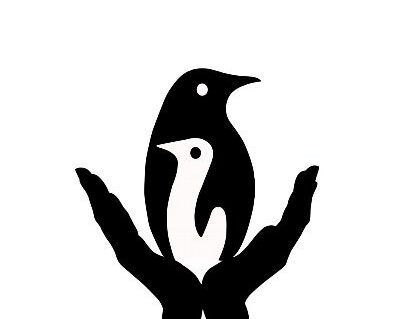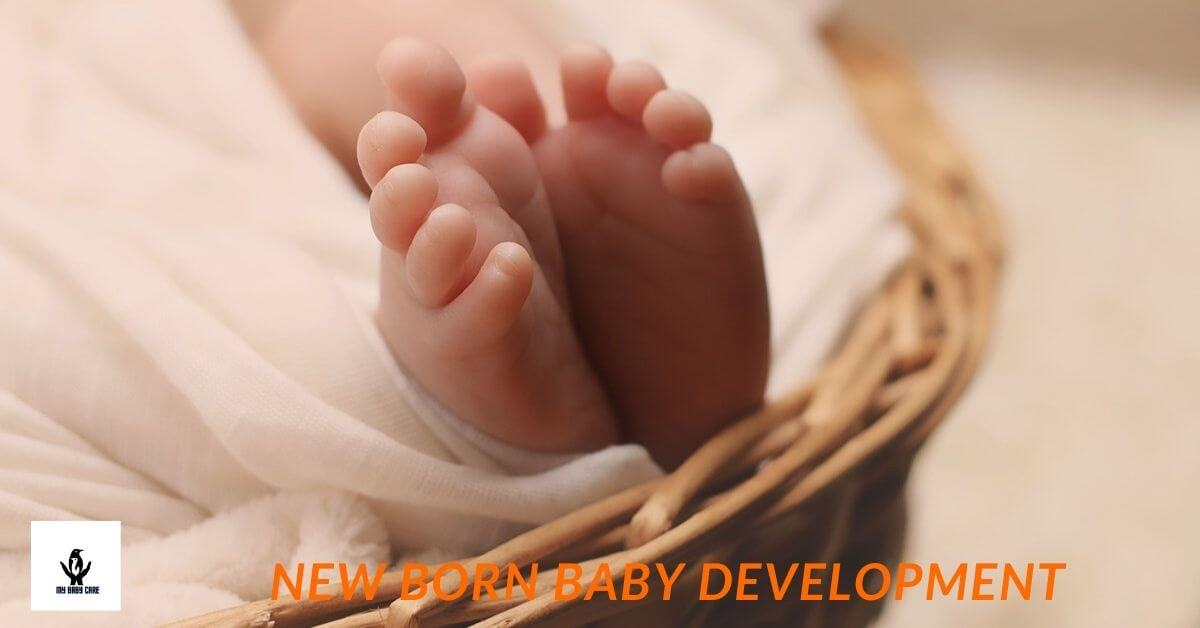Newborn baby development may be varied as babies reach milestones on their own developmental timeline. This is one of the joyful time periods with your baby.
All the time the baby is cuddling, sleeping, and feeding. Your child is learning a lot within this time period.
So it is very important to spend more time with the baby. Their brain is growing and developing very rapidly. They are very much sensitive to the basic sense.
In this stage, your baby is always trying to make proper eye contact with you. This eye contact making is a basic developmental milestone and this is a very important newborn development aspect.
The babies look at faces as a very interesting thing. They always try to make eye contact with each and every person they meet.
Also, they keep the same eye contact with toys with contrasting colors like red, black, and white. Your baby spends a very enjoyable time with their toys in this stage.
Secondly, your one-month-old can hear your voice and they can identify your voice and the tone. They sometimes perform startling responses when they hear a familiar voice nearby.
Making eye contact is a way of getting attention. Also, one-month-year-old babies communicate with their mothers through crying. Most of the time they cry with their throaty noises when they need you.
Table of Contents
Supervised playtime on his or her belly on the mat
Try to notice the following movements when the one-month-old baby while lying on the mat. Skills like tummy position activities can be mastered only if there is an opportunity to practice
- Lift their head briefly
- Lying on the tummy
- lift the head 45 degrees when on the stomach
- Turn to the side while lying on the back
- Maximize their visual field by turning side to side on the mat.
- Baby tries to hold your finger sometimes.
- Frequently they make tight fists and keep their hands.
- Respond to a bell in some way, such as startling, crying, quitting
- Focus on a face
- Vocalize in other ways than crying ( cooing)
- Smile in response to a smile
Maybe even able to
- Lift the head 90 degrees when on the stomach
- Hold head steady when upright
- Bring both hands together
- Smile spontaneously
What you can expect at this month’s check-up
Your doctor as your health visitor will have their own approach to well-baby checkups. They will use physical exams and a number of assessment techniques to examine your baby.
A physical exam. The doctor or the health visitor will examine and assess most of the following and some evaluations will be carried out by experienced eye or hand without comment.
- Heart sounds with a stethoscope and visual check of the heartbeat through the chest wall
- Abdomen, by palpation (feeling outside), for any abdominal masses
- Hips, checking for dislocation by rotating the legs.
- Hands and arms, feet and legs, for normal development and motion
- Back and spine for any abnormalities
- Eyes, with an ophthalmoscope or a penlight, for normal reflexes and focusing and tear duct functioning
- Ears, with an otoscope for color and condition of mucous membranes
- Mouth and throat, using a wooden tongue depressor for color, sores, bumps
- Neck, for normal neck movements, thyroid and lymph gland size(lymph glands are easily felt in infants and that is normal)
- Underarms,for swallen lymph glands
- The fontanels (soft spots on the head) by feeling with the hands
- Respiration and respiratory function, by observation and sometimes with the stethoscope or light tapping of the chest and back
- The genitalia, for any abnormalities, such as hernias or undescended testicles. The anus for creaks or fissures.,the femoral pulse in the groin, for a strong steady beat.
- Healing of the umbilical cord and circumcision if applicable
- The skin, for color, tone, rashes, and lesions such as birthmarks
- Reflexes specific to baby’s age
- Overall movement and behavior
How to help your newborn infant
1. Think of various ways of spending time with your child. Even though they are a one-month-year-old, you try to read storybooks and picture cards and sing songs.
Rhymes and love melodies with your baby take main importance where you can show your facial expressions to your baby and make eye contact with them, and address them with various tones and noises.
This will enhance the sensory education of your kid. They automatically tend to take sensory inputs by interacting like this with their moms and family members.
They lay the basic foundation for their language skills at this age by doing above mentioned activities.
2. Smile with your baby and talk with them by looking face to face. This type of emotional activity helps to release important chemicals in their body that will enhance the attachment and safe and secure feelings in their mind.
3. Try to take both hands and legs into the midline of your baby and perform play activities with them. Try to teach them the sense of depth, distance, and horizontal and vertical planes by moving their body parts.
4. Let your baby play on their tummy on the mat on the bed. That will strengthen their head and neck muscles and upper trunk muscles.
This is an essential aspect to hold the head upright and facilitate them to crawl and pull themself and later stand on the floor. You need to observe your baby while they are in tummy time and put them on their back to sleep on a mat.
5. You can stimulate your baby’s senses by massaging them. So, try to give them a careful massage and let them relax, and make a loving bond with your baby while massaging.
Understanding specific cues of baby
Try to understand specific baby cues of your baby ( which are unique to them ). You can communicate a lot with your baby by understanding these specific cues. Meanwhile, you will get to know the exact time your baby needs their feeds or a nap.
Think about the various ways of bonding with your baby. Making above mentioned eye contact building is the main tactic for making a bond with your baby.
Also, this type of nonverbal communication method and cues will express various ideas with the baby and the mom.
Newborn crying – A Specific way of their communication
Crying is a way of communication for your baby within this age limit. You can respond to their crying by feeding them or making them sleep. That response made them more comfortable and safe in daily life.
So it is very important to identify the unique cues of your baby and that will help to comfort them. So try to understand your baby then no need to spoil them by picking them up or doing unnecessary cuddling.
When your baby is crying, it makes you frustrated or overwhelmed. So take your time to calm yourself and put your baby in a safer cot during that time.
Shaking your baby when they are crying is not an advisable thing that may cause internal brain damage.
Parenting – An everyday learning process with you and your baby
Each and every day, you get a chance to learn about each other with your baby. Do it with mutual understanding and establish a lovely bonding. There, you will learn more about their daily needs and how they meet their needs.
As parents, this continuous learning is a key point and that will make you confident about what you know about your baby.
Conclusion
Don’t hesitate to get the assistance of professional bodies such as GP s and child and family health nurses in these types of situations
Sometimes your baby is not moving arms or body parts. They perform motionless posture most of the time and they are not feeding well. They are not sucking milk at all.
At this stage, the baby is not responding nicely to your facial expressions, voice, or things like brighter objects or lights. They are not making the usual gurgling sounds and not even making
As parents, you also need to get medical assistance if you or your partner experiences the signs of postnatal depression in men or women.
Symptoms of postnatal depression include feeling sad and crying for no obvious reason, feeling irritable, having difficulty coping, and feeling very anxious.
Children reach their developmental milestones at different speeds. So, a better understanding of the cues gives you valuable information.
You may get additional good insights through a one-month-old baby settling in. check out it here.

